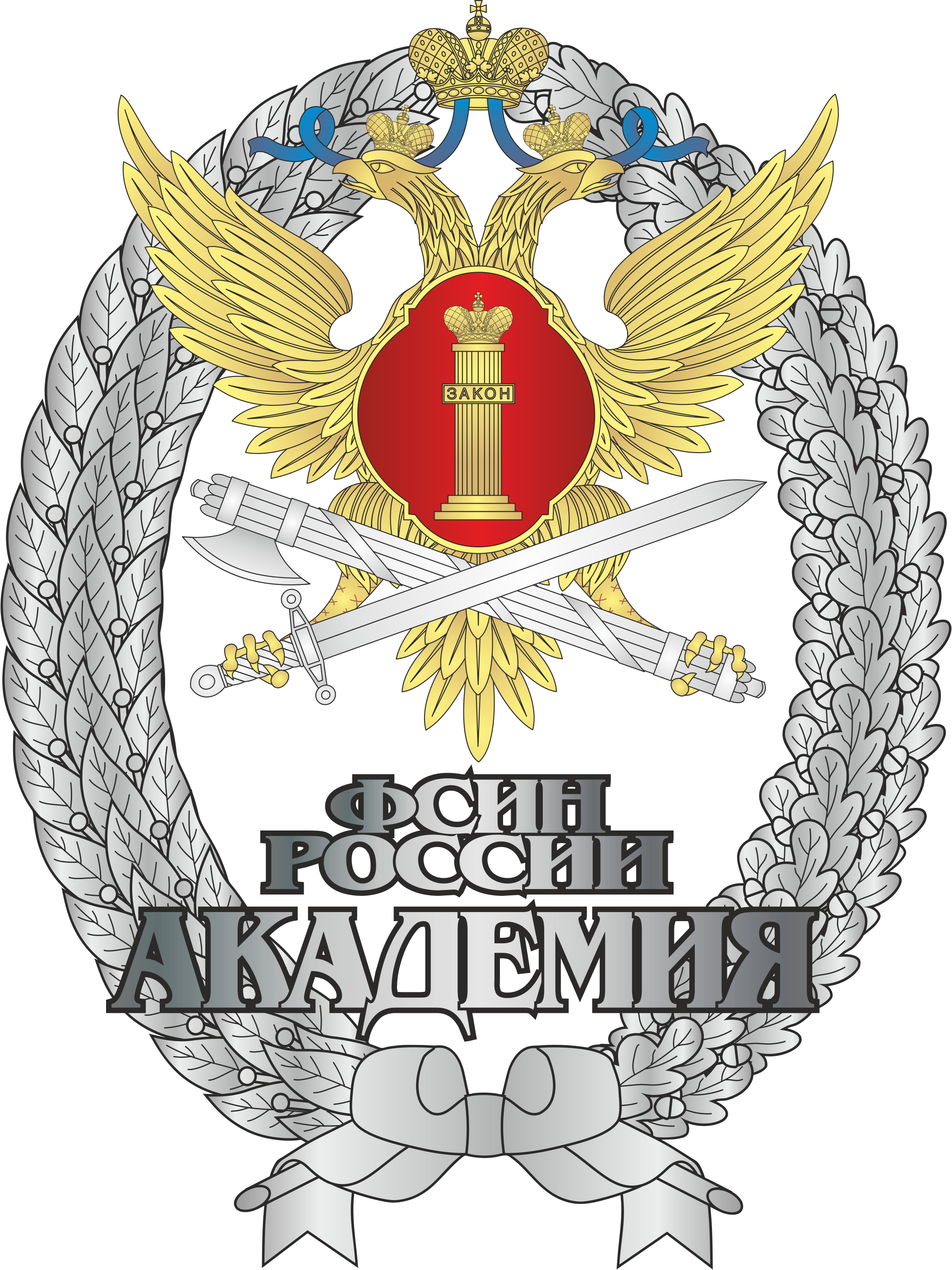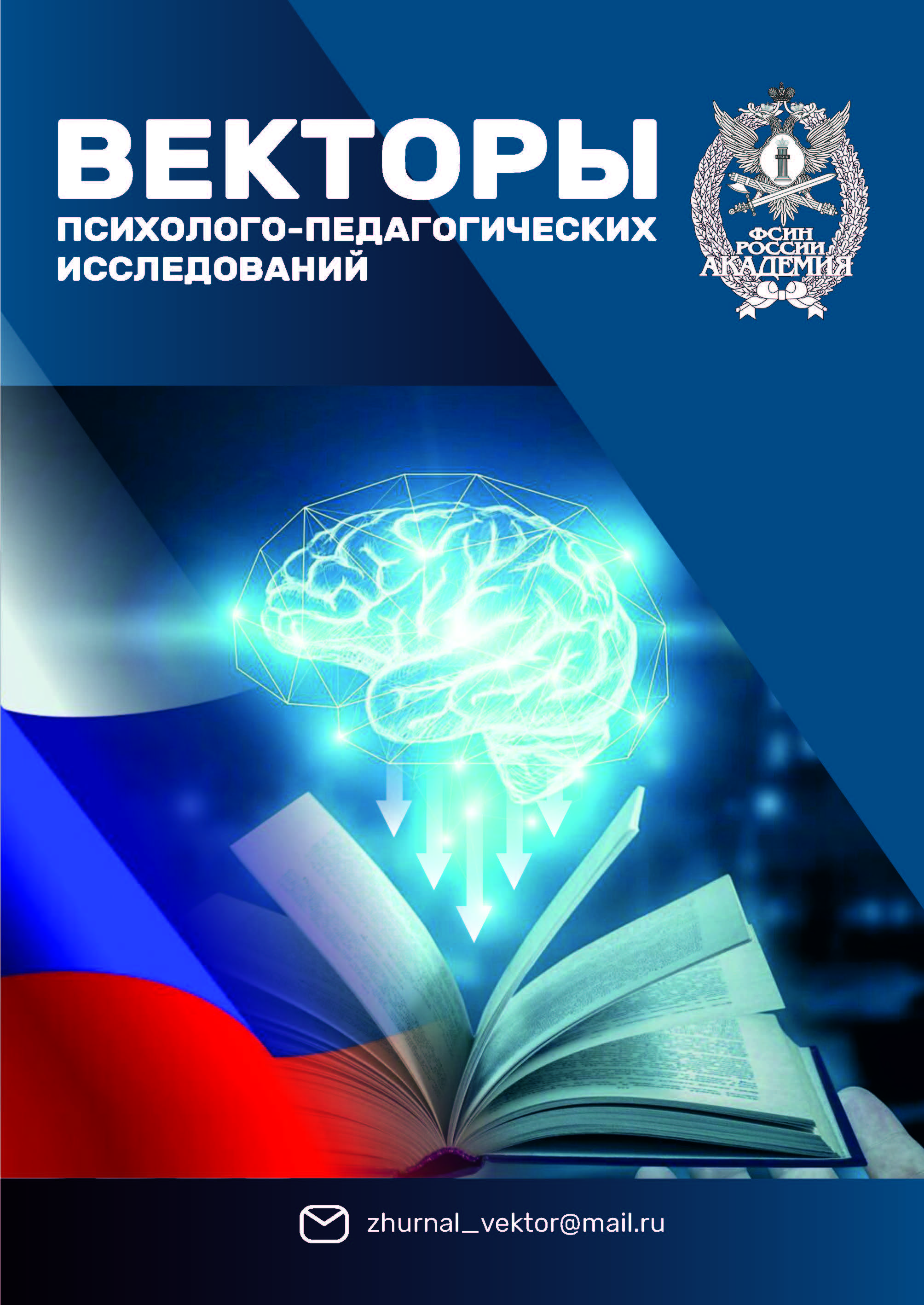UDC 159.9
UDC 343.8
The article contains the results of an empirical study aimed at identifying the characteristics of impulsivity and volitional self-regulation in male suspects and accused persons detained in a pre-trial detention center due to their age and criminal record. The cumulative sample, consisting of 137 subjects, was first divided into three age groups (men from 23 to 30 years old; 31 – 45 years old; 46 - 60 years old), and then into two groups – a group of men who received the status of suspects and accused for the first time, and a group of men who previously had them (were convicted). It is shown that the proportion of impulsive subjects in three age groups did not exceed 10 % and this fact should be considered favorable; the overall level of volitional self-regulation of suspects and accused is moderate, and in the older age group its indicator slightly exceeds the average level; their self-regulation is age-related and tends to increase as it increases. It was noted that in all the studied groups of suspects and accused, the indicators of perseverance, a structural component of volitional self-regulation, were significantly higher than the indicators of self- control, while the proportion of subjects with a low level of both components of volitional self-regulation was significantly lower in the older age group. There are highly significant age-related differences between the groups in terms of self-control and less significant in terms of the overall level of volitional self-regulation. Attention is drawn to the fact that a comparative analysis of the indicators of impulsivity and volitional self-regulation of male suspects and accused held in a pre-trial detention facility, who received these statuses for the first time and repeatedly, did not reveal significant intergroup differences. It is recommended to continue the development of this topic on a more representative sample.
male suspects and accused, pre-trial detention center, impulsivity, volitional self-regulation, perseverance, self-control, age-related features of impulsivity, age-related features of volitional self-regulation, intergroup differences
1. Avtonomov, D. A. 2018, ‘The place of impulsivity in the clinic of narcology’, Scientific and practical journal "Narcology", iss. 1, pp. 48–53.
2. Dementiy, L. I. 2017, ‘Age-related features of self-control, impulsivity and aggressiveness of schoolchildren’, iss. 2., viewed 3 August 2024, https://cyberleninka.ru/article / n/vozrastnye- osobennosti-samokontrolya-impulsivnost-i-agressivnost-shkolnikov.
3. Dubatova, I. V. & Antsyborov, A. V. 2019, ‘The role of impulsivity and impulsive control disorders in the formation of addictive disorders’, Interactive science, iss. 6(40), viewed 8 March 2024, https://cyberleninka.ru/article/n/rol-impulsiv nosti-i-rasstroystv-impulsnogo-kontrolya-v- formirovanii-addiktivnyh-rasstroystv.
4. Zotov, P. B. 2017, ‘Suicidal behavior of detainees and convicts’, Suicidology, iss. 2(27), pp. 60–69.
5. Kolesnikova, N. E., Mikhailova, Yu. A. & Prokurova, S. V. 2020, ‘Socio-psychological personality traits of female convicts serving sentences without isolation from society’, Psychopedagogy in law enforcement agencies, iss. 3(82), viewed 8 March 2024, https:// cyberleninka.ru/ article/n/sotsialno-psihologicheskie-cherty-lichnost-zhenschin-osuzhdennyh- otbyvayuschih-nakazaniya-bez-izolyatsii-ot-obschestva.
6. Konopleva, I. N., Knyazeva, S. O., Debolsky, M. G. & Krasnenkova, S. A. ‘Features of self-regulation in convicts who committed crimes during recidivism’, Psychology and law, vol. 12, iss. 2, pp. 27–41.
7. Korolenko, Ts. P., Dmitrieva, N. V., Levina, L. V. & Perevozkina, Yu. M. 2015, ‘Psychology and psychotherapy of impulsivity’, Scientific notes of the St. Petersburg State Institute of Psychology and Social Work, vol. 23, iss. 1, pp. 16–19.
8. Kuznetsova, D. A. 2024, ‘Personal characteristics of convicted men with demonstrative blackmail behavior’, Penitentiary science, iss. 1(65), viewed 8 March 2024, https://cyberleninka. ru/ article/n/lichnostnye-osobennosti-osuzhdennyh-muzhchin-s-demonstrativno-shantazhnym- povedeniem.
9. Kuznetsov, P. V. 2013, ‘Suicidal attempts of men arrested under investigation: ways and means’, Tyumen Medical Journal, iss. 3, pp. 30–32.
10. Losenkov, V. A. 2013, ‘Impulsivity. Self-regulation and forecasting of social behavior of a personality’: a dispositional concept, pp. 286–289, Moscow.
11. Nikiforov, G. S. 2020, ‘Psychology of self-control’, St. Petersburg.
12. Osipova, O. Yu. & Matveeva, O. S. 2017, ‘Features of self-control of male convicts prone to aggressive behavior’, Problems of modern pedagogical education, iss. 57-4, pp. 323–329.
13. Pozdnyshev, S. V. 1926, ‘Criminal psychology. Criminal types’, ch. 6. Impulsive criminals, Leningrad.
14. Safuanov, F. S., Telesheva, K. Yu., Myamlin, V. V. & Kirenskaya, A. V. 2018, ‘Pathoharactero- logical features of mentally healthy persons prone to impulsive aggression’, Psychology and law, iss. 3, pp. 150–166.
15. Telesheva, K. Yu. 2023, ‘Comparative study of psychological characteristics of persons prone to criminal aggression in mental disorders’, Applied legal psychology, iss. 4(65), viewed 4 August 2024, https://cyberleninka.ru/article/n/sravnitelnoe-issledovanie-psihologicheskih- osobennostey-lits-sklonnyh-k-kriminalnoy-agressii-v-norme-i-pri-psihicheskih.
16. Herman, A. M., Critchley, H. D. & Duka, T. 2018, 'Risk-Taking and Impulsivity: the role of mood states and interoception', Frontiers Psychology. 29:9:1625.
17. Jaime Chamorro, Silvia Bernardi, Marc N Potenza, Jon E Grant, Rachel Marsh, Shuai Wang & Carlos Blanco, 2012, 'Impulsivity in the general population: a national study', J Psychiatr Res.
18. Kanwal, S. & Kazmi, S. F. 2022, 'Impulsivity, impulsive aggression and borderline personality features among violent spouses', Heliyon, vol. 8, iss. 8(5-6).
19. Tsvetkova N. A., Kolesnikova N. Y., Rybakova A. I., Petrova E. A. & Fomina S. N. 2016, 'Self-regulation mechanisms of men convicted for the first time and repeat offenders', Man In India, iss. 96(10).








